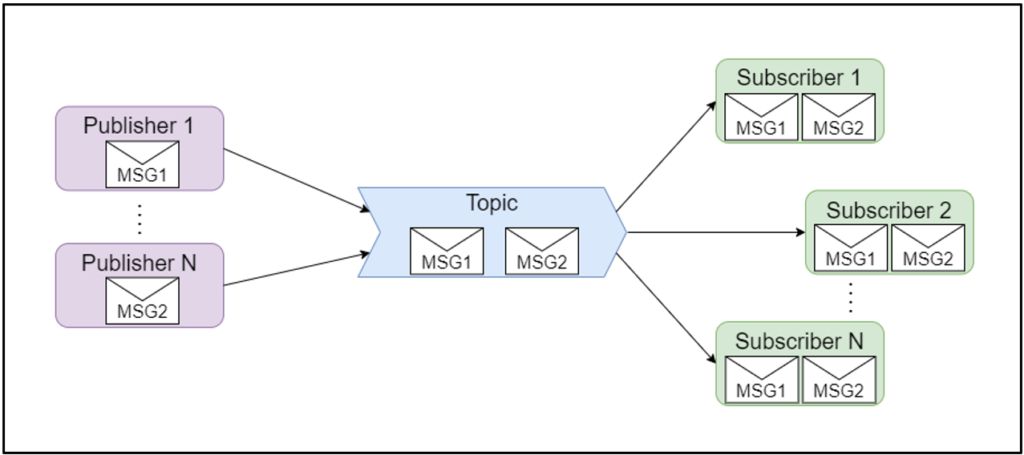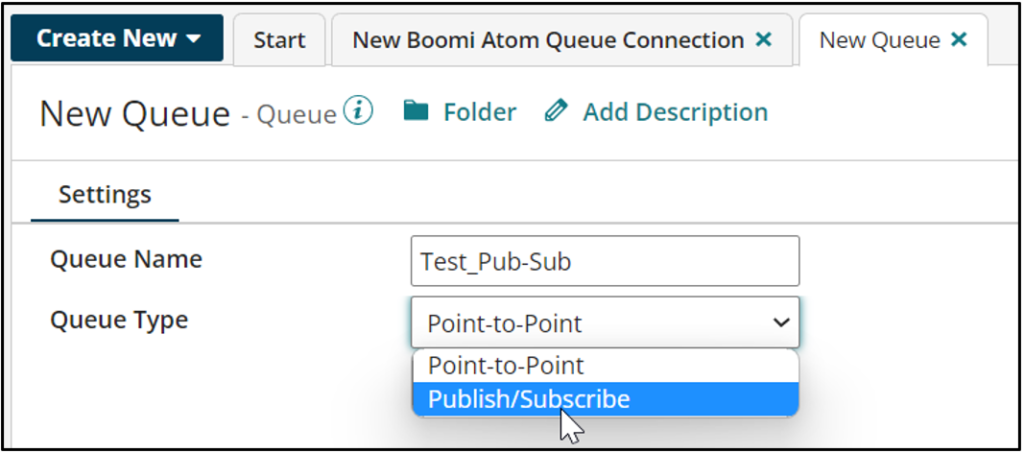What is Pub/Sub Messaging Model?
The Pub-Sub (Publish-Subscribe) model is a message pattern used for asynchronous communication. With the growing demand for loosely coupled architecture and reliable communication between the systems/services, it has become crucial for an organization to adapt to this pub-sub messaging. Pub/Sub offers
- Applications to be loosely coupled.
- Reliable communication method.
- Event-driven approach
Below is an example of a Topic-based system where publishers/senders posts events to the servicing queue, without regard to how or when these events would be processed. Servicing queue would then broadcast the incoming messages to the subscribers.

Core components:
- Publisher – who pushes the message to the Queuing service
- Topic – Most of the Queuing service offers a Topic-based methodology to asynchronously broadcast incoming messages.
- Message – Actual Event/content that needs to be broadcasted
- Subscriber – Consumers of the message.
How is Pub/Sub implemented in Boomi?
Most enterprise queuing services offer a Publisher-Subscriber messaging model along with point-to-point communication. Also, Boomi offers Publish/Subscribe methodology as part of Boomi’s Atom queuing. The queuing type must be set to Publish/Subscribe when defining New Queue (Topic) in Boomi. In the pub-sub model, the publisher and subscriber to the message don’t know each other. So once a message is pushed to the topic, subscribers must actively listen to the topic to get the messages. The message would be lost if there are no active subscribers to the topic.

Benefits:
- Asynchronous communication between the processes – The main process doesn’t wait for the child to finish.
- Decoupling – Processes can be decoupled and can be executed independently of one another. It ensures one process failure doesn’t affect the other.
- Multiple recipients – Messages can be broadcasted to multiple recipients independently.
Use cases:
- Event distribution – Incoming messages can be distributed across multiple systems for real-time processing.
- Replicating data – Sometime Org’s master data needs to be synced up with downstream systems independently of the other system’s success or failure.
- Parallel processing – Pub/Sub enables parallel processing and streamlined workflows.
Additional Resources:
Cover Image by xb100 on Freepik




